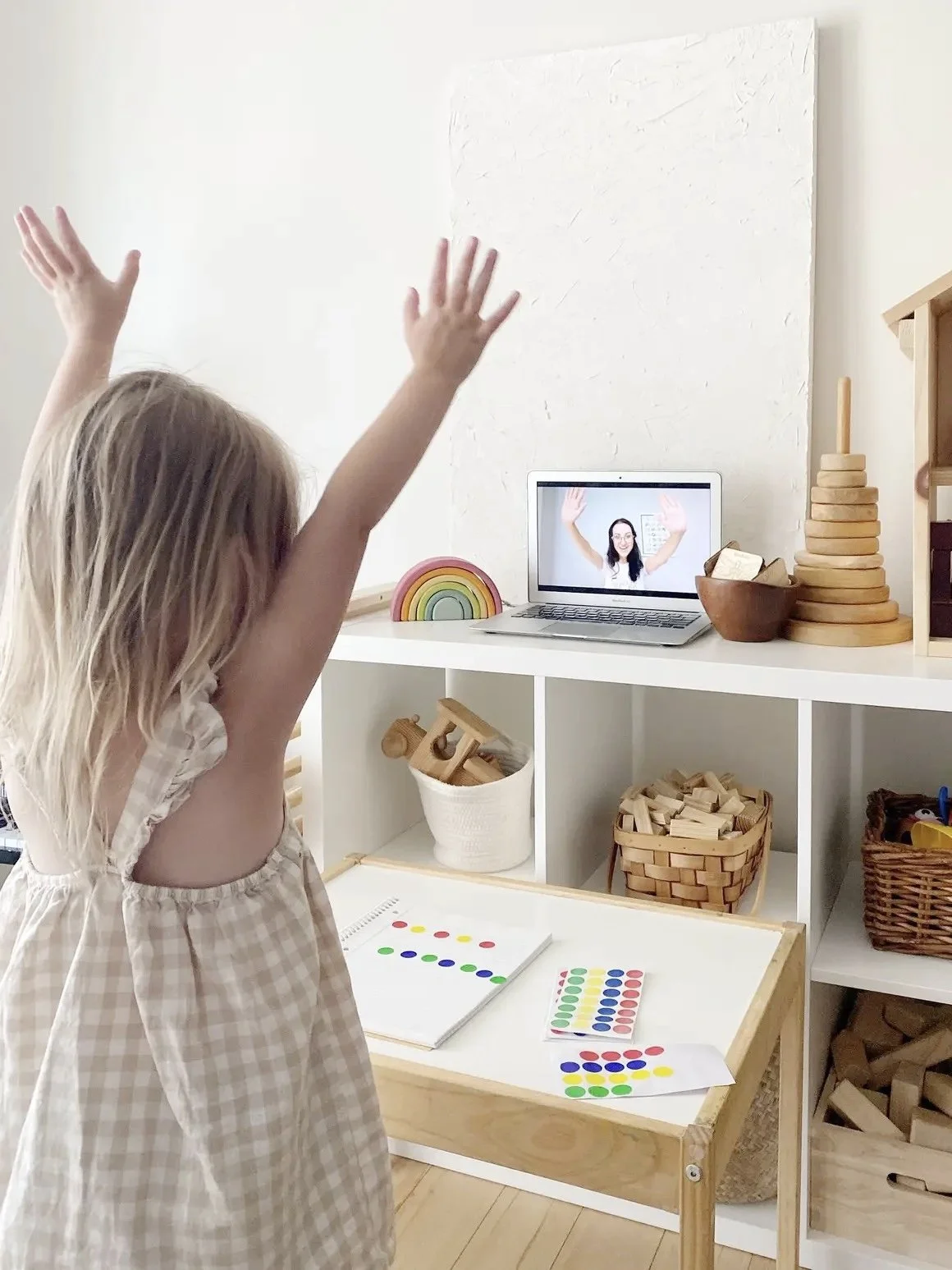Raising a Bilingual Child
Perhaps the loveliest gift for a child is the chance to experience life through a different lens. Amy Warr, founder of 123 Petits Pas, teaches French to infants, toddlers and children up to age nine. Her light and playful classes, designed for parents and children to learn together, make raising bilingual children easy.
Amy chose to raise her own children in French after studying it herself. “I know how isolating it can feel to raise a child in a language that isn’t your first or isn’t spoken as much in your community, so I wanted to build something that truly supports families in that journey,” Amy says. “I looked for support and couldn’t find anything that felt right, so I created what I wished existed: fun, interactive classes where parents and children learn together, without pressure.”
Her dynamic online classes feel like play, not school. “I truly believe that everyone—kids and adults alike—learns best when they’re moving, laughing and fully engaged,” Amy explains. “I blend music, movement and a little mystery into every class to keep things playful and exciting.”
At only 30 minutes long, her weekly live classes are a chockful of smiles and laughter with props, puppets and real-life activities to teach vocabulary, and packed with crafts, sing-a-longs and storytelling to support language immersion.
“Our on-demand programs can be used any time, at your own pace,” says Amy, emphasizing that even five or ten minutes of language exposure a day can make a big difference. “I often say: consistency beats intensity. It’s not about doing a lot, it’s about doing a little often,” she adds. “My goal is to take the effort out of it for parents so that they know they’ve got their French practice at home covered.”
Amy teaching a class participant.
Young children can pick up a new language swiftly, often surprising their own parents. While parents expect it will take months before their little ones will learn a few French words, Amy sees it happening much faster. “They naturally want to join in and start saying words aloud because they’re engaged, having fun, and sharing that special moment with their parent,” says Amy. “Obviously, the child needs to be at an age when they’re already speaking, but typically you’ll hear them saying words like coucou and dedans within their first class.”
More than fun and games, the developmental benefits are what motivate so many parents to introduce second-language learning in their homes. According to Amy, bilingual children tend to develop stronger problem-solving skills and greater mental flexibility. The advantages don’t stop there. Soft skills, such as empathy and the ability to connect with others, offering immeasurable rewards, top Amy’s list of reasons for learning a new language. “What I love most is the connection it creates between cultures, within families, and even across generations,” Amy says. “One of my favourite examples is a French-speaking grandfather who hadn’t been able to share his language with his own children, but suddenly got to see his toddler grandson speak to him in French. Those moments are incredibly special.”
Bilingual children also develop an openness and sensitivity towards children who speak other languages. It helps them see the world differently and build confidence. Amy recalls a proud moment when her eldest son, at age five, asked her how to say, “It’s OK” in Arabic. “When I asked why, he said, ‘There’s a boy at camp who cries. I think it’s because he doesn’t speak English or French, and I want to tell him it’s OK in his language,’” Amy shares. “It’s a perfect example of how language learning isn’t just academic—it’s deeply human and helps kids connect in powerful ways.”
Amy photographed by @alanawinchester.photography
Amy’s own love of the French language was ignited after her first trip to France. Afraid to speak and make mistakes, she had to overcome her own mental block. Pushing past that fear made her fall in love with the process of learning French. “That’s when I knew I wanted to teach French, specifically to help others move through that same fear and discover the joy of actually speaking the language,” says Amy.
123 Petits Pas also provides a range of language learning resources to support parents at home. These include printable activity packs, cheat sheets, downloadable music and a digital guide for parents. “Most of the resources I create come from real needs—either I’ve been searching for a tool that doesn’t exist, or a parent reaches out asking for help with something specific,” Amy says. “Everything I design is with non-French-speaking parents in mind, so they can confidently engage in French activities with their children,” The resource she is most proud of is a bilingual book co-authored with her mother, How to Make Un Ami.” The picture book helps answer the question of why learn a language.
For those already on board, here are Amy’s tips for supporting your child’s learning even if you don’t speak French yourself:
1. Learn alongside your child. This is huge. When your child sees you making an effort and having fun with it, they’re much more likely to engage. You don’t need to be perfect—they just need to see you trying.
2. Start small. Play French music during breakfast, read a short French book before bed, or try learning a few phrases together during your daily routine.
3. Make it fun and natural. This is the most important one. Don’t force it; you want your child to build positive associations with the language.
To learn more, visit 123 Petits Pas or follow on Instagram and Facebook, where Amy shares lots of simple, family-friendly ideas.
TEXT BY FATIMA RIZZO


